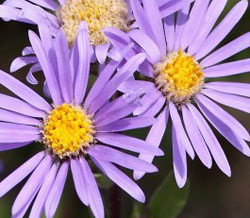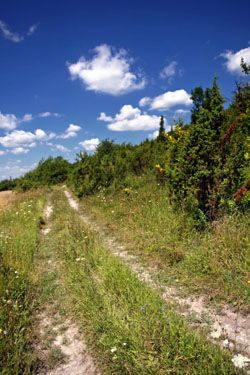
|
ŻURAWCE (PLH060029)
Established in an area of 35.9 ha, the site at Żurawce PLH060029 protects the slopes of three rises in arable land located near the settlements of Korhynie, Żurawce and Machnów Stary. The Żurawce site is situated on the border of the Middle Roztocza and Small Polesia regions, but in terms of administrative responsibility, it is in Tomaszów Lubelski County in the Jarczów and Lubycza Królewska Townships. The value of its natural qualities was recognized only in the 1990s. Actions were immediately taken to protect the most valuable sections of habitat. Currently, there are two environmental use areas here ("Korhynie" and "Żurawce") as well as a nature reserve ("Machnowska Góra"). Several additional environmental use areas are planned in the neighboring vicinity.
The floristic xerothermic grasslands with significant stands of orchids (code 6210) and the Juniperus communis formations on the xerothermic grasslands (code 5130) are the most valuable natural habitats found here under European Union legal protection. They grow on the partially eroded, sunny, calcareous slopes. This site includes 20 plant species under legal protection. Among them are: Anemone sylvestris, Aster amellus, Orobanche alba, Platanthera chlorantha, Listera ovata and Muscari comosum. Other xerothermic species found here that are worth noting, though unprotected, include Astragalus onobrychis and Peucedanum alsaticum.
The fauna at this site has been the subject of many studies. Sicista subtilis has been confirmed at Machnowska Góra, one of the rarest rodents living in Poland. The invertebrate fauna is well known here, with some species found only at this site. Among the most valuable are: Polyommatus icarus, Phengaris rebeli (formerly Maculinea rebeli) and Colias myrmidone. Papilio machaon also is seen frequently. An historic item of interest at the hills of Żurawce is the bunker that was once part of the "Molotov Line".
A significant portion of the area was formerly used as cultivated fields with xerothermic vegetation growing in the balks. After farming was abandoned due to the poor quality of the rocky, chalky rendzina soils, thermophilous plants returned to the abandoned fields. The wastelands of Machnowska Góra were afforested, worsening conditions for the flora species found here. In order to improve conditions, "Conservation and restoration of xerothermic grasslands in Poland - theory and practice" project will gradually remove trees from the nature reserve.
     
|

|



|








